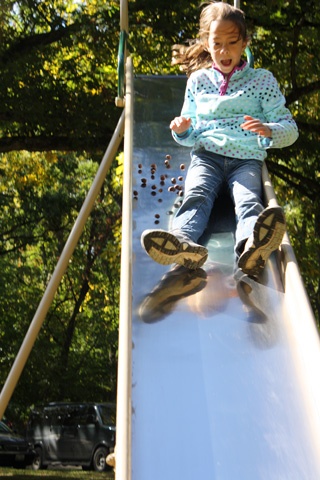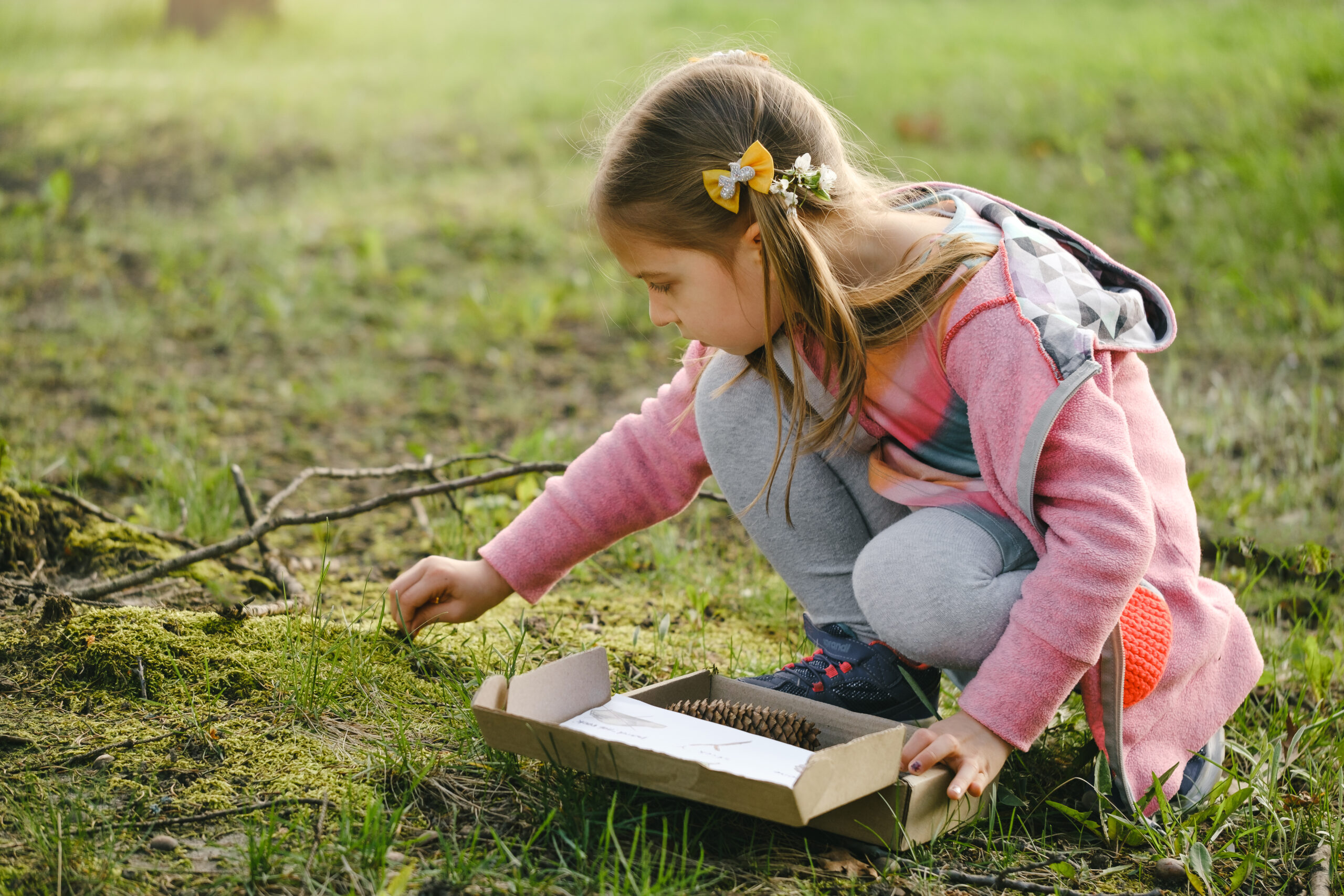As parents, we tend to focus on how many extracurricular activities our child is doing, thinking that the more they do the better their development will be. When chatting with friends, we tend to compare lists of activities as a sign of progress or accomplishment, such as “my child is doing piano lessons, tumbling, and ice skating.”
For some reason, that list doesn’t include “my child plays at the park every day” or “my child likes to collect rocks, leaves, and flowers in our backyard and create a pretend restaurant.” You might be surprised to learn that those types of activities are just as important, and possibly more important, for healthy development in young children. Plus, playing in a greenspace is a lot less expensive; it’s free!
When you think of taking a child to a “greenspace,” a park or a backyard, we often seek an open lawn—a soft, green carpet of grass for running, jumping, chasing, and rolling. An expanse of mown grass is great for physical activity, but children gain an entirely different set of benefits from playing in a greenspace when it provides “loose parts.”
What Are Loose Parts?
Some greenspaces can provide small stones, sand, leaves, flowers, seeds, twigs, stalks of tall grasses, and more.

What Types of Child Development Are Supported by Playing With Loose Parts?
Playing with loose parts in nature means that the materials don’t always have a predetermined function. There are endless options for what the item represents. For example, a pinecone might represent an imaginary pet or an apple. This can encourage children to use their imagination and play more creatively, which helps them develop their mind and social skills.
Playing with loose parts can encourage children to be constructive, gathering materials to build something new. This encourages creativity, flexible thinking, and exploring cause-and-effect. (If I stack something heavy on top of something lighter, what happens?)
Playing with loose parts encourages conversation and shared experiences between adults and children. If the gathered materials inspire a pretend restaurant, the child practices the skills of verbally explaining their ideas and their imaginary world, which teaches them social skills, verbal skills, and perspective taking (the ability to think about what other people might be thinking).
Playing with loose parts can provide a natural opportunity to practice counting; naming colors; comparing and contrasting similar items based on size, shape, and color; and even learning plant and insect names.
What Can Children Do With Loose Parts?
- Flowers can be pretend “make-up applicators” or pretend food in an imaginary restaurant.
- Small stones can be gathered, compared, stacked, etc.
- Sand can be scooped and molded.
- Leaves can be collected and compared based on size, color, and texture or made into pretend “blankets” for pinecone “babies.”
- Seeds and seed pods can be pretend money for an imaginary store or used to create smiley faces on the pavement.
- Twigs can be collected and arranged into small structures that only a preschooler can fit inside.
- Stalks of tall grasses can become wands, swords, or light sabers.
- Insects can be carried around as temporary pets.
The opportunities are endless (and free)!

As an Adult, How Can You Foster Children’s Engagement With Loose Parts in a Greenspace?
Give your child a bag, a bucket, or any recycled plastic container. Walk with them around the yard or park and ask them to find things. Sometimes those items can be gathered, and sometimes you will need to leave them in place, in which case the child can pretend to “take a picture” of it with an imaginary camera as a way of “taking it with you” (or actually take a photo).
Here are some ideas:
- I see something round and gray. Do you see it? (a small stone)
- I see something with pink on it. Do you see it? (a flower)
- Can you find a leaf that is larger than you hand?
- Can you find something that feels prickly to your fingers?
- Can you find something that feels soft to your fingers?
- Can you find something that flies away when you get close to it?
- Do you think we will find any worms or insects if we move this piece of wood?

Andrea Faber Taylor
Dr. Andrea Faber Taylor (afabrtay@illinois.edu) is a teaching assistant professor at the University of Illinois at Urbana-Champaign. For more than 25 years, she has been researching the relationship between children’s experiences of nature and healthy development. She also teaches a course about children and nature as well as several horticulture courses in the Department of Crop Sciences.
Biography current as of 2021
IEL Resources
- Resource List: Appreciating the Natural World with Young Children


